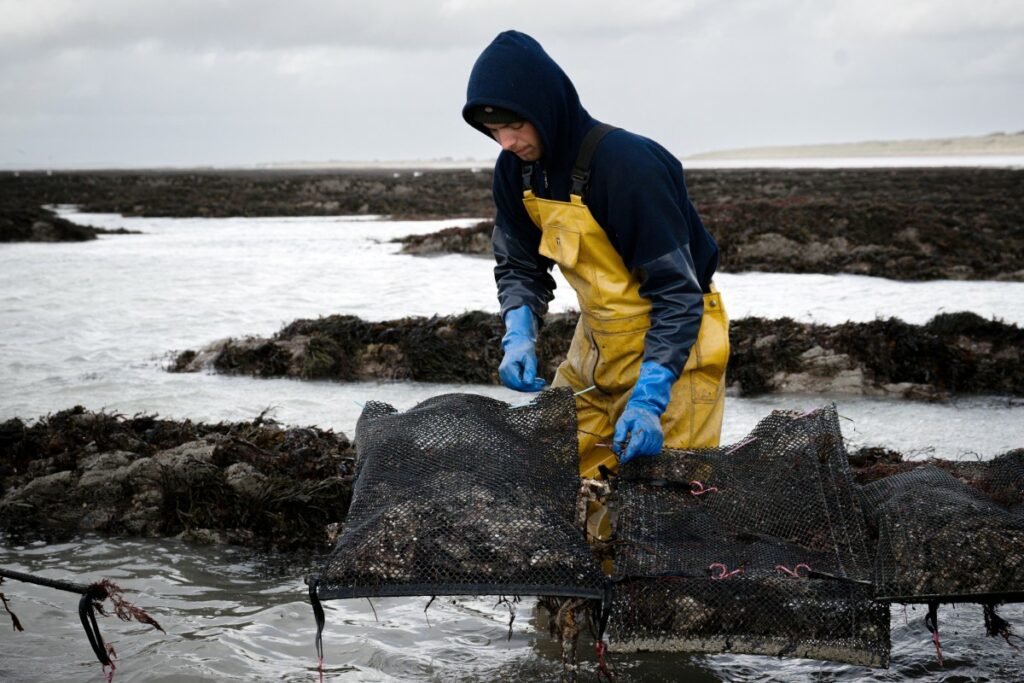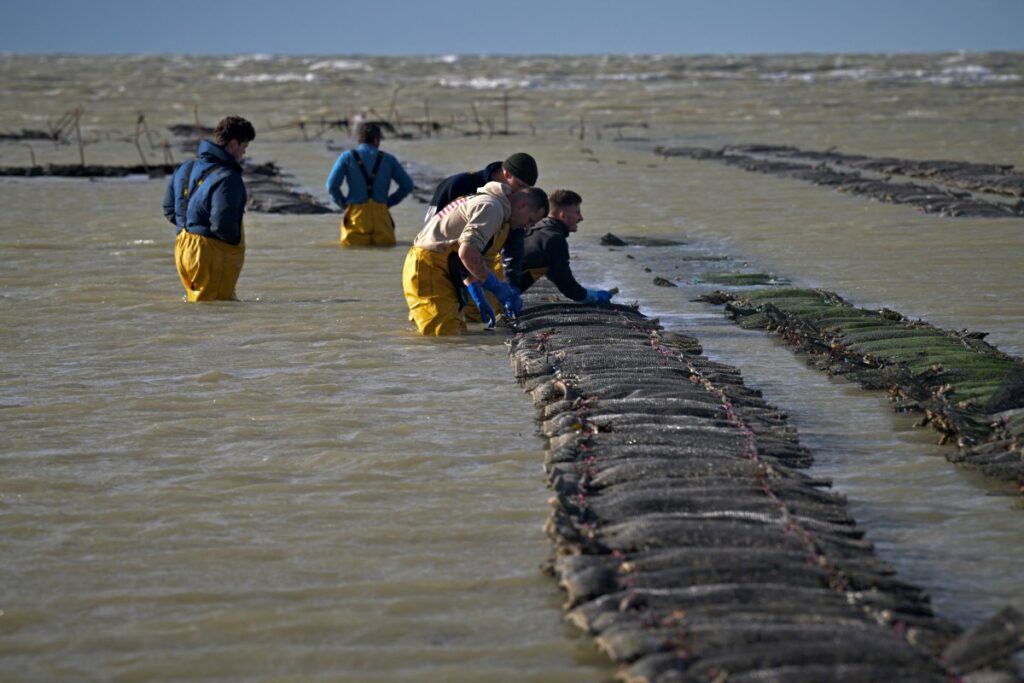Glatigny, France
Inspecting the damage caused by Storm Ciaran at his oyster farm on the Cotentin peninsula in northwestern France, Patrice Rodes sounds incredulous.
“I’ve been here 12 years and never seen anything like this,” says the farmer, perched on a tractor in the middle of an oyster bed on the west coast.
Rodes takes in the ravaged mesh bags and dislodged steel tables used to farm the molluscs, some of which are now strewn across the beach or buried in the sand.
Knee-deep in the water, seven employees are busy repairing the damage.
“Oysters that have spent more than eight days in the sand without breathing are finished: they live in the water,” Rodes says.
Record-breaking winds that swept through western Europe in early November devastated many farms in France, which is both the main producer and consumer of oysters in Europe.
Some oyster parks off the coast of Normandy have been completely devastated, while others suffered partial damage.
With the Christmas holidays just around the corner, French farmers are now racing to clean up and save as many oysters as possible.
The Christmas harvest will not be affected, but the effects will be long-lasting, Rodes says.
“It won’t change the volume we’ll produce for Christmas, but for next year in January or February.”
Heavy bags of oysters that had already grown large were more stable or already harvested, while more volatile bags of small oysters are gone, he says.
Tides have kept the farmers from the oyster beds for about two weeks.
Beds further offshore are still underwater and will not be accessible before January, Rodes says.
He takes stock of the losses as he moves further along the sandy beach, around 50 kilometres south of Cherbourg.
“I never thought I’d be hit this hard.”
“I can already see three or four piles of tables, and a fifth here,” he adds, pointing to a tangle of metal structures emerging from the water.

– ‘We just needed a storm’ –
“It must have blown very hard,” says the 54-year-old, approaching one of the heaps.
“We don’t usually have this kind of problem here, we have 1,200 tables in this park, it’s going to be very complicated.”
The devastating storm exacerbated an already “difficult” business environment, which has made oyster farms “less and less sustainable,” Rodes says.
“It’s hard to find staff, the climate of anxiety is slowing down consumption, we just needed a storm for things to be perfect!” he jokes.
Thierry Helie, head of a regional association of oyster producers in Normandy, shares his pessimism.
He says he is concerned about the fate of farms on the west coast of the Cotentin peninsula, saying there are around 200 such businesses there.
“We have lost 30 percent of our retail price this year, in other words one euro per kilo,” says Helie.
In the new year, “there won’t be enough oysters at the end of January,” he adds. “Many animals have died.”
As Rodes drove back along the beach, the wheels of his tractor smashed thousands of dead oysters to smithereens.
Pointing to the white shells scattered on the beach, he shouted to AFP: “You should film this, these are dead oysters moved by the winds.”
© Agence France-Presse






